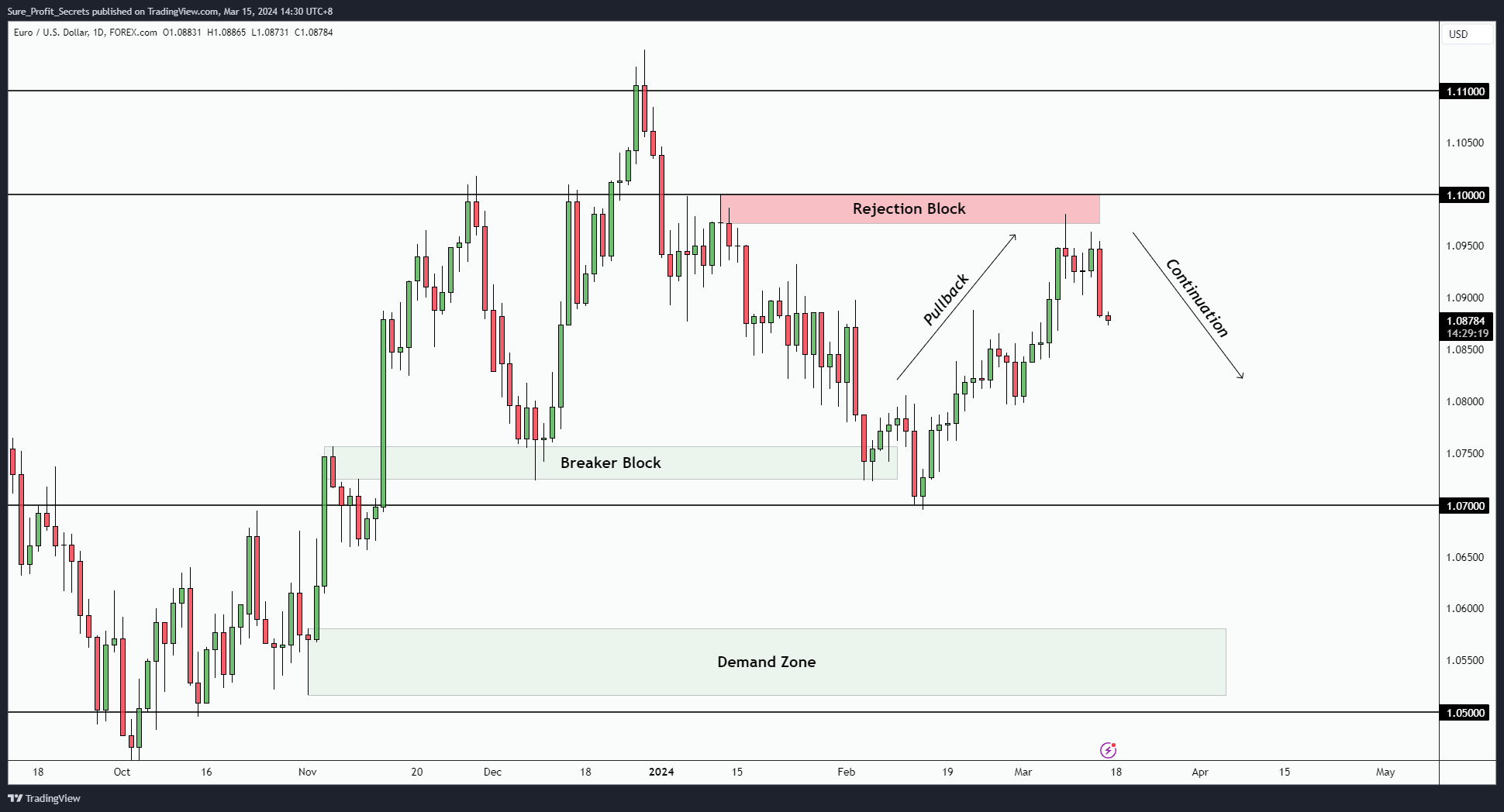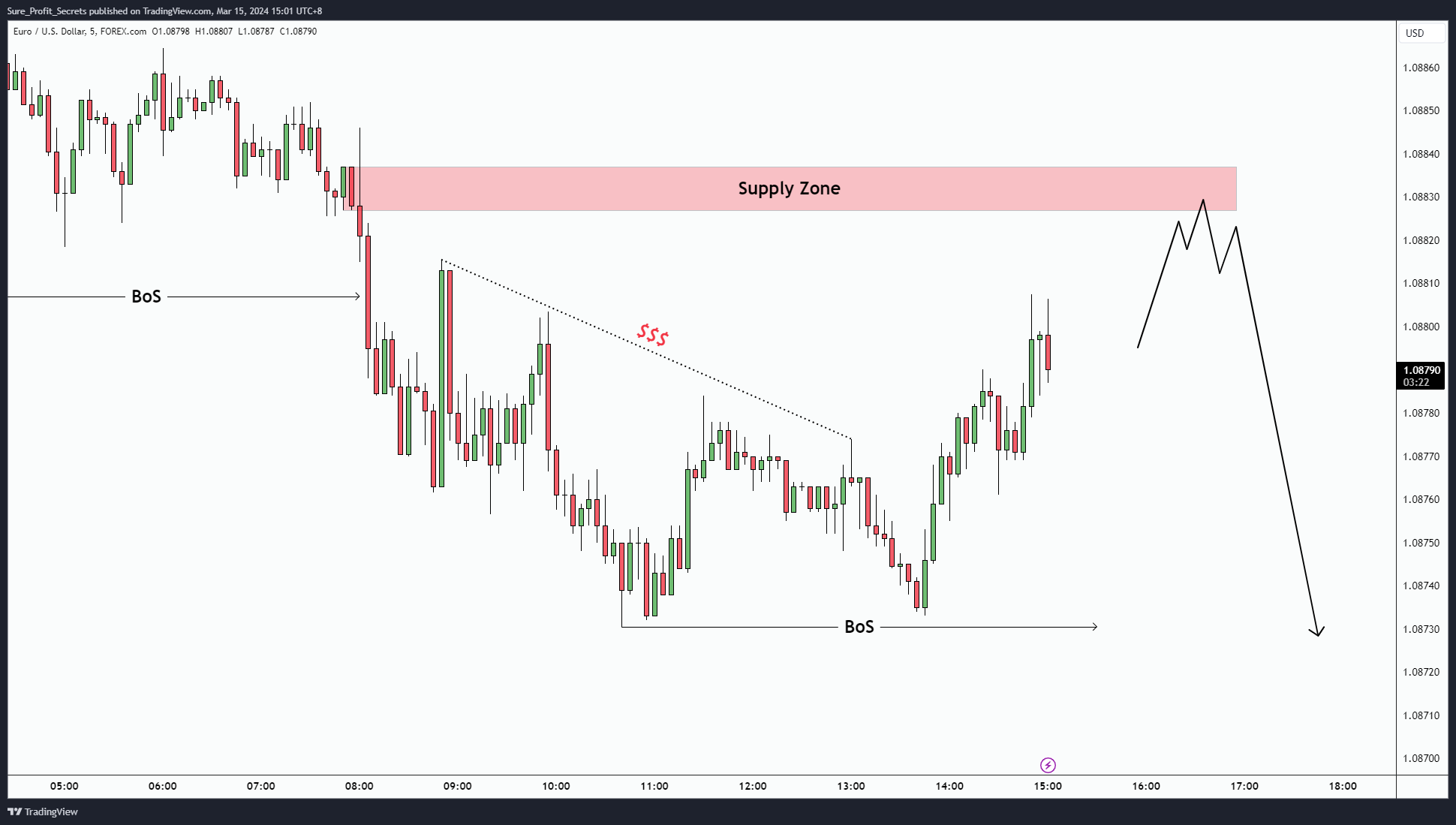How to Create a Good Trading Plan?

If you feel lost while trading or find yourself jumping around timeframes to find good signals, you might be using a reactive trading approach. This will only drain you and will lead to making mistakes like revenge trading or over trading. Expert traders plan their trading session before they start, and they trade based on their trading plan.
What is a trading plan?
In simple terms, trading plan is a framework that guides through our trading process. It clearly depicts the conditions under a trader should enter trades, identify market condition, exit and manage risks. Thus, a trading plan ensures that the trader is focused on their personal strategy and accountability.
How to create a trading plan?
Let’s discuss about the 5 main factors of a good trading plan. And how a good trading plan can help you optimize your trading behaviour.
1. Understanding Chart Context
Starting with Higher Timeframes: Price analysis typically begins with higher timeframes to get the overall chart context and determine the trend direction. Many traders opt for the Daily timeframe as their higher timeframe, as it offers a broader perspective suitable for various trading styles.
Identifying Trend Direction: On the higher timeframe, traders identify the general trend direction, which guides trade selection. Trading in the direction of the trend on the higher timeframe is commonly considered a more favorable approach.
Weight of Support and Resistance: Support and resistance levels identified on the Daily timeframe hold more significance. Traders should first draw support and resistance levels on their higher timeframe before moving to lower timeframes.
Additionally, identifying key round numbers and plotting previous supply and demand zones can also be done effectively on the Daily timeframe.
Example: In the provided screenshot of the Daily timeframe of EURUSD indicates that the price most probably ended its pullback & currently reacting from the rejection block. So, there’s a higher probability that the market may continue its bearish run once again till the next Demand zone.

2. Identifying Set Up:
While the higher timeframe suggests an overall bullish trend, it’s not advisable to enter trades blindly without analyzing lower timeframes. Lower timeframes help traders identify specific entry criteria and develop a trading plan based on their chosen strategy.
There’s a wide array of trading strategies available, and traders should select one that suits their preferences and goals. This article focuses on a common pullback trend-following system as an example, but the goal isn’t to promote a specific strategy. Rather, it’s to demonstrate a top-down trading plan technique.
Instead of immediately entering a long trade based on the Daily timeframe analysis, traders employing a pullback strategy wait for the price to offer a better entry point by moving lower.
Example: So, following the daily timeframe direction, we can look for sell setups on a lower timeframe like this M5 timeframe. Here, we’re waiting for liquidity to get swept, mitigate supply zone & with structure shift confirmation, we can enter sell entry to continue with the D1 timeframe bearish bias.

Trading plans typically follow an if-then format, where the “if” part describes a specific event on the price chart that the trader is waiting for, and the “then” part outlines the action the trader will take in response.
3. Setting Your SL, TP & Trade Management
The screenshot below is a scenario of an if-then trading plan. While traders often concentrate on finding the perfect entry point, they shouldn’t overlook other aspects of their trading strategy, such as stop loss and take profit placement.
Stop loss and target levels directly affect a trader’s win rate and the duration of their trades, which are critical metrics for evaluating a trading strategy’s effectiveness.

- A wider stop loss makes it more challenging for the price to reach and trigger the stop loss level, resulting in a higher win rate. Conversely, a tighter stop loss is easier for the price to hit, leading to a lower win rate.
- The distance of the take profit order from the entry affects the likelihood of the price reaching the target. A farther take profit level means it’s less likely for the price to hit the target but may result in longer holding times for trades. Conversely, a closer take profit level increases the likelihood of the price reaching the target, resulting in shorter holding times.
It’s crucial for traders to follow a consistent approach and apply the same rules to each trade. Varying rules from trade to trade can introduce inconsistencies and noise in trading results. Ideally, all trades should adhere to the same trading rules for stop loss and take profit placement.
Choose Your Analytical Approach
Analytical approach answers the question, “How do you identify trade set-ups?”. This can include a lot of factors. It can be a combination of priceaction, support & resistance, chart patterns, Fibonacci levels Heike Nashi Candles, Elliot waves etc.
Select Your Favorite Trade Set Ups
A trading set up is the key part of the trading process. However, you need to think of the analytical approach as the event that triggers the trade set up. Here’s an example: imagine you see a special patterns on a chart, which we call a “consolidation pattern”. This pattern is a part of the analytical approach. When you see this pattern, it tells you what to do next as a trader.

You might want to trade when the price breaks out of this pattern, or you can wait for the price to go back a bit before you trade. Therefore, you can combine these strategies, but only after the chart pattern has fully formed.
Limit the Market to Focus on
Secondly, for beginners, it’s crucial to keep their attention on just a few markets. Each market behaves differently. And by narrowing down the number of markets you follow, you can grasp the unique features of each one. You can even concentrate on particular time frames within a single market to become familiar with how it works and its price movements.
Think About Your Holding Period
Thirdly, the choice of timeframes in trading depends on the trader’s style. Short-term traders, like scalpers and day traders, aim to open and close their trades within the same day. Medium-term traders, known as swing traders, typically hold their positions for a few hours to several days.

On the other hand, long-term trading involves much longer time frames, ranging from days to weeks, months and sometimes even years. Each style of trading suits different goals and strategies.
Know Your Risk Tolerance
Every component of a trading plan holds significance, but without proper risk management, the entire plan can crumble. In this phase, traders must identify their personal risk tolerance, which determines how far they’re willing to set stop losses to mitigate potential losses.
At SureShotFX, we share a trading risk management guidance to all our premium members. We send trade set ups in our premium channels depending on our trade team’s analysis. However, we also encourage everyone to know when to exit a trade. We can provide you a good set up to make profit, but you need to know when to exit a trade based on your trading balance.
We found that traders who maintained a proper risk management and trade management were three times more likely to achieve profitability compared to those who lacked a clear risk-to-reward strategy.
Plan How You Will Handle Adversity (& Success)
Every trader will inevitably face the challenging period known as a drawdown. It’s crucial for traders to establish a set of rules to guide them when this occurs, helping them manage their emotions effectively.
Therefore, one practical approach is to predefine a specific monetary amount or a percentage of losses that would trigger a pause for reflection and analysis. It’s important not to establish this figure in the midst of a drawdown but to set it in advance. This proactive measure can prevent impulsive decisions and promote a more rational response to setbacks.
Have a Routine for Staying on Track
Traders should allocate time for reviewing the week’s activities and analyzing their individual trades. It’s advisable to consistently assess the trading plan and make adjustments as needed. Regularly reviewing and journaling your trades is an effective method to ensure that you are adhering to the process outlined in your trading plan.
Check out our free channel for more insightful posts about trading forex!

2 Comments